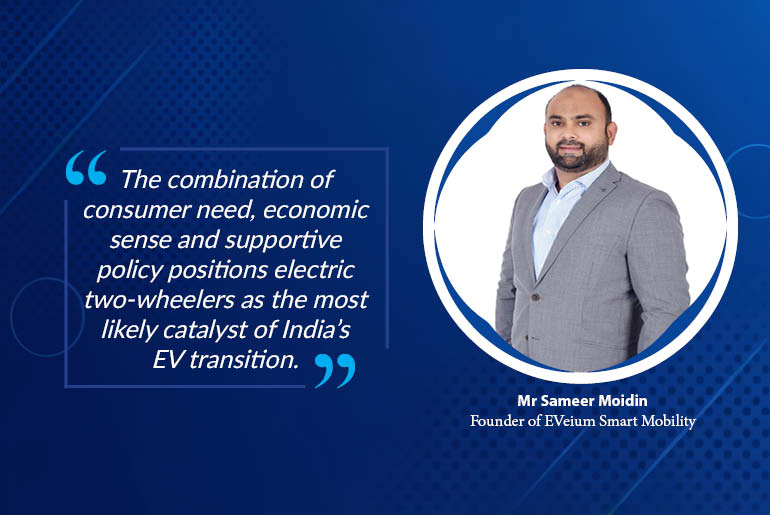India is at a turning point in transport where electric passenger cars and two-wheelers are increasingly competing for attention. Conversations often focus on four-wheelers when discussing cutting edge technology and international benchmarks, yet the biggest change on Indian streets is likely to come from electric two-wheelers. Two-wheelers already account for more than seventy percent of registered vehicles in the country and act as the mainstay of everyday travel. Affordability, practicality and growing financial pressures are accelerating electrification in the two-wheeler segment faster than in passenger cars.
Market Dominance
The Indian vehicle landscape rests heavily on two-wheelers which serve routine commutes, short trips and cost conscious buyers. Government goals underline this reality with a target that sees two and three wheelers reaching around eighty percent electric penetration by 2030 while private cars aim for about thirty percent. Sales patterns reinforce this shift, with January 2025 recording 169,931 EVs sold in India and nearly fifty nine percent of those being two-wheelers. These figures place electric scooters and motorcycles at the centre of the country’s EV expansion.
Economic Logic
Cost considerations are the main factor for most two-wheeler purchasers and rising fuel bills have swung the argument toward electric models. Petrol has become almost sixty percent more expensive over the past five years which makes running a combustion engine two-wheeler much costlier. Electric two-wheelers offer a compelling financial case with total cost of ownership estimates that are between twenty and seventy percent lower than petrol equivalents. For many families that rely on a two-wheeler as their primary vehicle, the long term savings on fuel and servicing make electrification a sensible choice.
Urban Relevance
Rapid urban growth has increased demand for compact, affordable and efficient travel modes. Two-wheelers are the obvious choice for negotiating crowded streets and short distance trips and electric versions slot neatly into this urban pattern. Passenger cars face hurdles such as high upfront prices and patchy charging infrastructure while electric two-wheelers can work well with smaller batteries and simpler charging solutions including charging at home. Their light weight and modest range needs match the everyday realities of India’s cities.
Delivery Revolution
Expansion of e-commerce and the rise in last mile delivery have reshaped transport demand and the pandemic only intensified dependence on doorstep services. Delivery firms are rethinking fleet economics and many now see electric two-wheelers as the most practical answer. These vehicles cut operating costs and reduce downtime which suits food delivery, grocery services and courier operations that need high utilisation. This commercial adoption gives electric two-wheelers a powerful growth engine beyond private ownership.
Policy Support
Government incentives and regulations are helping to build the EV ecosystem and two-wheelers are showing the most visible results. Support under national programmes and state level incentives along with tax advantages have narrowed the upfront price gap between electric and petrol two-wheelers. Investment in infrastructure has often focused on smaller charging networks suited to scooters and motorcycles. New financing options and battery swapping models are also lowering barriers to purchase and use. The combination of consumer need, economic sense and supportive policy positions electric two-wheelers as the most likely catalyst of India’s EV transition.
Conclusion
The path ahead for India’s electric mobility will be written not only through sleek cars or futuristic buses but also through the millions of scooters and motorcycles that form the lifeline of its transport system. Two-wheelers continue to dominate personal mobility and commercial use which means their electric iterations are poised to lead in scale, adoption and real world impact. The transformation on India’s roads will therefore be led not from behind the steering wheel of cars but from the handlebars of electric two-wheelers.

